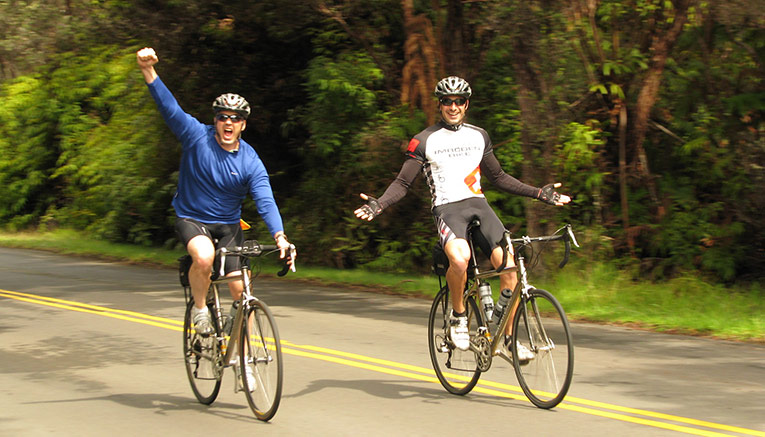If 2014 was your healthiest year so far, hats off to you! But if not, there's always time to get your fitness game on lock. So why not try something new in the new year? Here are 10 fitness trends to look out for this year.
As we look out towards the year ahead it seems impossible not to imagine new fitness trends emerging. From boutique Boston studios to larger box gyms, these fitness facilities house the opportunity for new classes and fads to flourish.
So what should we be looking out for in 2015? The American College of Sports Medicine conducted at survey and found the following to be at the top of the list for the new year. Unfortunately, the once popular dance-inspired fitness class Zumba along with mixed martial arts training fell off the list for 2015.
1. Body Weight Training
From at-home workouts to hotel room circuits, body weight training is always in style. And if you're someone who believes you need external weight (dumbbells, kettle bells, etc.) to gain strength, begin by increasing the number of repetitions you perform utilizing your own body weight.
Chances are you'll be sore the next day.
2. High-Intensity Interval Training (HIIT)
This form of fitness is one we've spoken about greatly. Not only is this an efficient workout — meaning you'll gain better results in less time — there's a variety of ways in which you can execute it. Tabata, 20 seconds of work followed by 10 seconds of complete rest, can be formulated to fit almost any exercise.
Your heart rate will rise and you'll most likely become breathless — luckily a Tabata is only 4 minutes long!
3. Educated and Experienced Fitness Professionals
While this isn't a specific class or workout, per se, it is crucial to be taught or instructed by certified fitness professionals. Becoming a trainer requires education — something you'll appreciate when your bootcamp instructor is barking at you to complete another pushup.
4. Strength Training
Whether you're lifting a barbell or your grocery bag, it's important to be strong.
Studies have shown that incorporating two sessions per week of strength training will improve your bone density, metabolism and even state-of-mind!
So grab a set of dumbbells, kettle bells or a barbell for a healthier body and happier mind.
5. Personal Training
Personalized attention for an exercise routine is essential. Can we all afford it? Probably not.
However, there are ways to get this programming without paying a hefty bill. Look into small group training with a few friends or check with your local health club to see what their training package options are.
6. Exercise and Weight Loss
According to Value Walk, 38-percent of New Year's resolutions are related to weight loss. So it is no surprise that this topic is trending in the health and fitness arena for 2015.
If you're looking to drop some lbs. in the new year, just remember, nutrition plays a key role in maintaining a healthy weight. Check out some of these mobile apps that can help you stay on track.
7. Yoga
From hot and sweaty to themes like hip-hop, yoga has expanded to more than just one form. And lucky for us Bostonians, there is a plethora of studios to choose from.
Seriously, take your pick.
8. Fitness Programs for Older Adults
While this may not be the entire demographic, exercise is vital for those getting older. Just as we spoke about weight training improving our bone density, incorporating the correct forms of fitness will greatly improve many aspects of day-to-day life.
From walking up stairs to maintaining the mobility to tie your shoes, fitness is the foundation for living a better life.
9. Functional Fitness
Making an appearance on the 2014 trends list, functional fitness has become a buzz word over the past couple of years. One of the newest and most popular forms is the innovative training device, TRX.
According to the suspension training site, "Functional training prepares you for the movements you perform in everyday life. Your body works as an integrated, interdependent unit."
10. Group Personal Training
If you're interested in personalized programming, but are concerned about the price tag, group training is the way to go. Settling in the last spot of trends for 2015, group personal training is a fantastic way to achieve the fitness goals you've set for the new year.
So grab a few of your buddies and hit the gym. Not only will you gain motivation from your peers but also accountability by signing up as a team.
Hi! I'm Riyesh Menon, a health and fitness guru from Marin County, California. Follow me on Twitter for more tips on how to achieve a healthier body.














